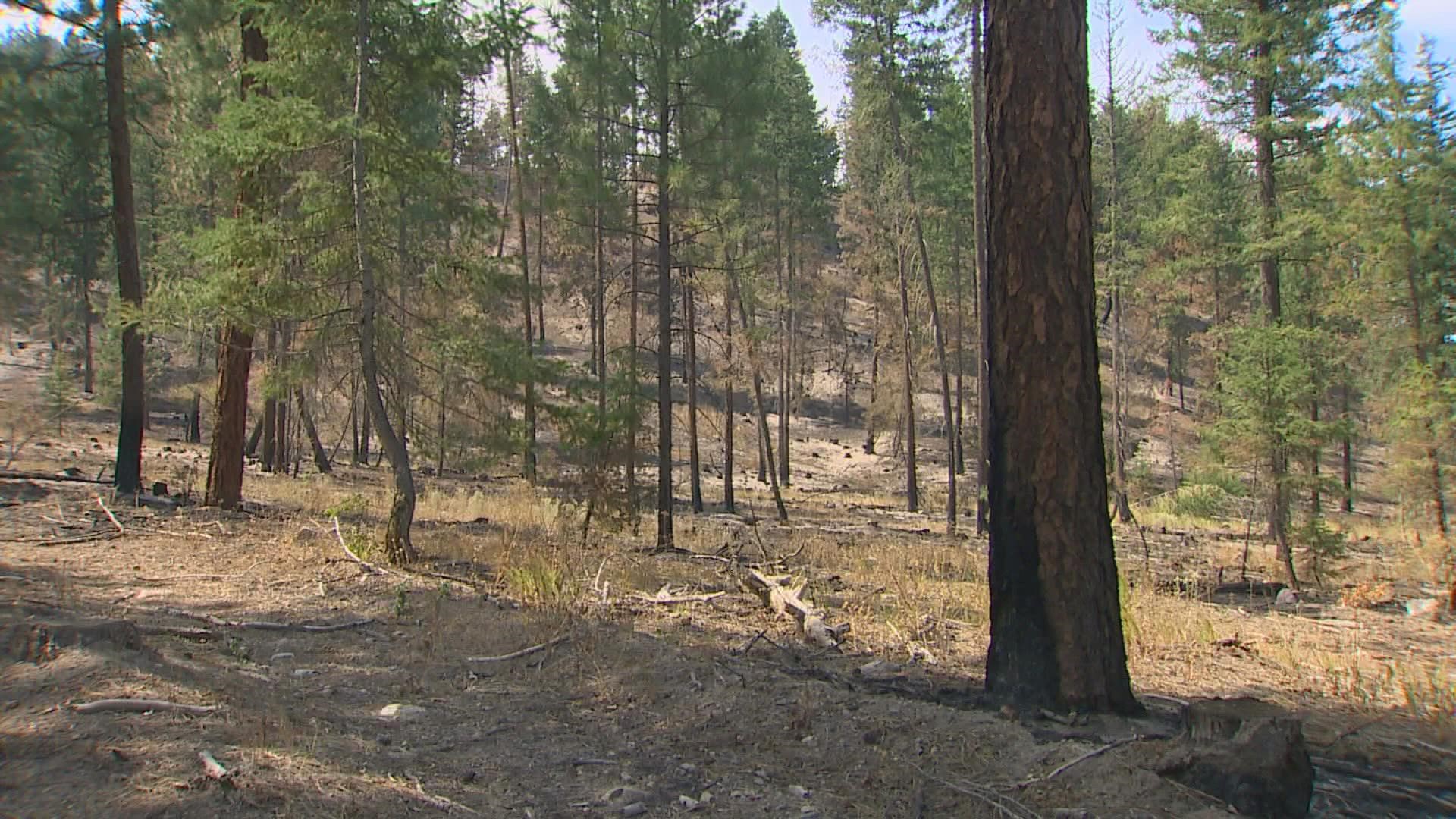OKANOGAN COUNTY, Wash. — Can a forest be modified to make it less likely to burn?
That's what Washington's wildfire experts have been testing in Okanogan County, where a major wildfire burned hundreds of acres that were treated to make the forest healthier and more fire-resistant -- and they're finding the results are mixed.
People don’t have to drive long across the landscape of eastern Washington to see evidence of recent and even record-sized wildfires.
Typically, these forests now look like a collection of blackened sticks, except where the raw wood is exposed as the bark flakes away as weather and rot take their toll.
The forests are starkly surrounded by green fields of new growth. Too often, those sticks are Ponderosa pine, the dominant tree species in that part of the state and much of the west — trees that have survived for hundreds of years through regularly recurring natural, lower intensity fires.
But in the 21st century, fires have grown so intense these giant trees are often killed through heat and flames from massive conflagrations.
The Washington Department of Natural Resources (DNR) is trying to change that. Armed with new legislation and new money, forests in eastern Washington are being thinned and treated to try and recreate the natural forests of centuries past, dominated by fewer trees.
These forests have more space in between trees and fewer bushes. Many small trees and other plants that compete with larger trees for nutrients in the soil also make them more vulnerable to the stress of fire, bugs and disease. But these treated forests are no longer chocked full of excess growth, all of which is energy that can be released in the form of heat and flames.
“Pre-settlement structure is what we’re looking for in our stands,” said Pat Ryan, who manages timber harvests on state trust lands.
In 2019, cutting crews treated 300 acres on two stands on Virginia Ridge near the town of Winthrop in Okanogan County. Now, the large Cedar Creek Fire has put those stands, known as "unit 1" and "unit 2," to the test, with mixed results.
The burned stands are a few miles apart.
Unit 1 has done well after the Cedar Creek Fire burned through it. The damage included areas where firefighters burned sections out deliberately to deprive the advancing fire of extra fuel and starving it.
“That is the vascular system of the tree, that’s where the roots take the water to the top,” said Ken McNamee, the northeast regional manager for DNR, as he used a knife to cut away a small section of soot black pine bark to get down to what's known as the cambium layer between the bark and the wood. “So, right now, this is super moist, so it didn’t get super hot, so it’s probably got a pretty good chance,” McNamee continued.
The tops of these trees are still green, which is a good thing. McNamee won’t know if this particular tree, or any of the others, survived the wildfire until next spring. It’s the torching of a tree, where flames burn clear to the top that is the worst outcome and almost sure to be fatal.
While unit 1 holds promise for recovery, it's a different story a few miles away at unit 2, where the tops of most of the trees on a slope are brown or blackened from wildfire damage.
“We’re learning this as we go,” said Public Lands Commissioner Hilary Franz, as she overlooked unit 2 from a distance. The freshly burned forest is still considered too dangerous to enter without additional firefighters and equipment, which can't be spared from the front lines of the wildfire fight.
“There’s a discrepancy in science as to how many trees should be left on the landscape,” said Franz. “In this case, we left in many places, about 40 trees per acre. We’re going to go in after this fire is put out, and we’re going to use it to learn.”
But in this section of forest, dotted with homes, barns and other structures, those structures are still standing. And while unit 2 may not be considered a success from a tree survival point of view, it should have seen less energy released, less fire, with fewer trees per acre.
Again, the analysis of these forests is only just begun.

